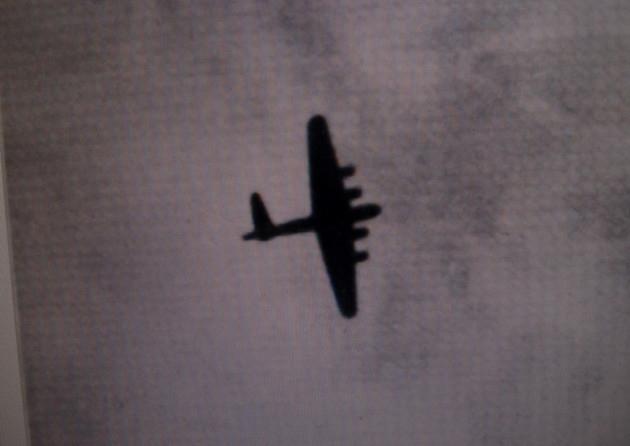
The wreck of a World War Two B-17 Flying Fortress has been discovered on the bottom of the sea off the Norfolk coast of England. Two divers discovered the remains, and since the discovery they have been back to investigate further. On dry land, meanwhile, the divers have been researching how the B-17 came to be at there.
From their discovery and investigation, Paul Hennessey and Mandy Frary believe that because the B-17’s pilot and co-pilot acted with such bravery when the plane got into trouble, they saved nine of the aircraft’s ten crewmen. They also may have saved the lives of civilians on the ground who could have been injured if the plane crashed on land instead of into the sea. The only person who died in the crash was the pilot, Captain Derrol Rogers.
Hennessey and Frary set about finding the wreck after retrieving coordinates from a fisherman who had spotted the wreck a few years ago. The wreck is sitting on the seabed around 20 metres below the water’s surface. Previously it was thought to be a jet that crashed during the 1960s, but now the divers have confirmed that it is a World War Two B-17.
Fishermen have also provided information about the engines of a B-17 that were recovered in the nearby area during the 1970s. The engines are assumed to have been separated from the wings in the crash landing. The diving team have taken extensive underwater photographs of the site and were able to clarify the B-17’s location and identify its serial number as 42-29752, based out of RAF Snetterton Heath.
The story of the crash is incredible:
On May 13, 1943, they prepared for their first mission at the start of their combat tour.
They were to attack the Luftwaffe airfield at St Omer, France – but things went wrong straight away as the 22 aircraft taxied for take-off.
Two planes veered off the runway and the lead aircraft had to abort over Spalding because of an oxygen leak in the ball turret. The rest followed their leader back to base – except for B-17 42-29752.
Its fate is recorded in the book Snetterton Falcons, written by Geoff Ward, from Diss, and Robert Doherty, a veteran of the 96th.
Pilot Capt Rogers had been on a roll of bad luck. Two days earlier his original aircraft, “Miss Poisonality”, had damaged a wing in a collision with a contractor’s truck on the airfield and was being repaired.
Lt Joe Hudson, who was the navigator on board 42-29752, later wrote of the tragedy: “We had been warned about the possibility of being attacked while we were taking off or landing. “Consequently, our machine guns were charged. When Capt Rogers banked the ship, the right waist gun discharged about 50 rounds, severing the right horizontal stabiliser.
“By great flying skill Capt Rogers and his co-pilot, Lt Norville Gorse, managed to correct the stall.”
The scattering bullets had also injured two of the crew, waist gunner Sgt Edwin Wolfekule, and tail gunner Sgt Edward Youngers.
The aircraft’s yoke – steering column – was pushed as far forward as possible but, with a missing stabiliser, it still continued to climb.
Rogers and Gorse struggled to keep the plane steady, tieing cords to the yoke which gave them enough control to fly back over the airfield where six of the crew bailed out safely.
The injured Sgt Youngers had been hit in the spine so a rope was tied to his rip chord before he was thrown out, enabling his parachute to open without his intervention.
Rogers and Gorse then bravely flew out over the Wash to jettison their bombs away from people before turning back, over land, so that the bombadier and navigator could bail out safely, near King’s Lynn.
Next, the hero pilot and co-pilot took their crippled plane back out to sea to ditch it away from built-up areas.
They both bailed out somewhere off Blakeney and the plane disappeared beneath the waves to be discovered 72 years later by the North Norfolk Divers team.
Lt Gorse was picked up by an RAF rescue launch and lived to fight another day.
Sadly, Capt Rogers was in the freezing North Sea for some time before Sheringham Lifeboat Forester’s Centenary found him, unconscious. He did not survive and is buried in the American military cemetery, at Madingley, near Cambridge.